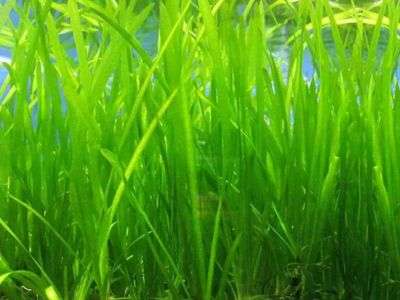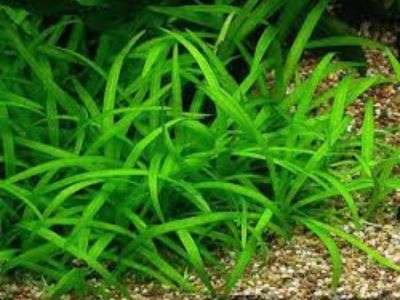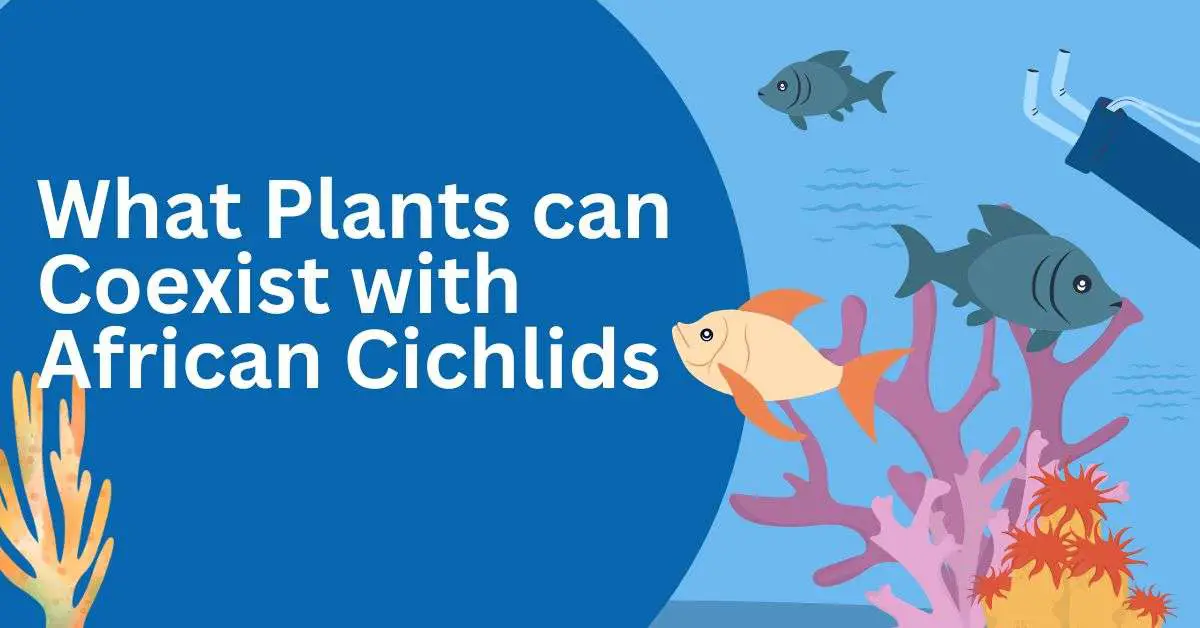African Cichlids, often admired for their vibrant colors and dynamic behavior, are among the most popular freshwater fish species kept in home aquariums. These fish originate from the diverse lakes of Africa, including Lake Malawi, Lake Tanganyika, and Lake Victoria. They come in various shapes, sizes, and temperaments, making them fascinating additions to any aquarist’s collection.
In the intricate ecosystem of an aquarium, plants play a crucial role beyond mere aesthetics. They contribute to the overall health and balance of the environment by oxygenating the water, absorbing harmful substances, and providing shelter for fish and other aquatic creatures. Understanding the compatibility between African Cichlids and aquarium plants is essential for creating a thriving aquatic habitat.
This article aims to delve into the characteristics of African Cichlids, explore the challenges and considerations of keeping plants with them, identify suitable plant species for Cichlid tanks, and provide tips for maintaining a harmonious balance between fish and flora.
Understanding African Cichlids
African Cichlids are known for their striking colors, diverse patterns, and unique behaviors. Originating from the rift lakes of Africa, these fish have adapted to a variety of habitats, including rocky shores, sandy bottoms, and densely vegetated areas. They exhibit territorial behavior, often establishing hierarchical structures within their social groups.
These fish thrive in environments with ample hiding spots, rocky formations, and open swimming areas. Water parameters such as pH, hardness, and temperature vary depending on the species and the specific lake they inhabit. Understanding these preferences is crucial for providing optimal conditions for African Cichlids in captivity.
Challenges of Keeping Plants with African Cichlids
While the presence of live plants can enhance the aesthetics and biological balance of an aquarium, it can pose challenges when combined with African Cichlids. These fish are known for their propensity to dig, rearrange substrate, and exhibit aggressive behaviors, which can result in damage to delicate plant species.
Furthermore, African Cichlids prefer alkaline water conditions, which may not be conducive to the growth of certain plant species. Maintaining water parameters compatible with both the fish and the plants requires careful attention and monitoring.
Choosing the Right Plants
Selecting plant species that can withstand the unique demands of African Cichlids is essential for a successful aquarium setup. Hardy plants with robust leaves and root systems are preferable, as they are less likely to be uprooted or consumed by the fish.
Considerations such as plant placement, substrate type, and lighting requirements also play a significant role in determining the suitability of plants for Cichlid tanks. Plants that can thrive in low-light conditions and substrates with high mineral content are ideal choices for these setups.
Anubias: A Resilient Option
Anubias plants are renowned for their resilience and adaptability, making them excellent choices for African Cichlid tanks. These plants have thick, durable leaves that can withstand the occasional nibbling and digging of Cichlids. Additionally, Anubias species are known to thrive in low-light conditions, making them suitable for aquarium setups with minimal lighting.

Anubias
Java Fern: Thriving in Cichlid Tanks
Java Fern is another popular plant species that can thrive in African Cichlid tanks. With its robust rhizome structure and sturdy leaves, Java Fern can withstand the rough handling and water conditions typically found in these setups. Propagating Java Fern is relatively straightforward, making it an ideal choice for beginner aquarists.

Java Fern
Vallisneria: Adding Depth to Your Tank
Vallisneria plants are valued for their long, slender leaves, which can add depth and dimension to Cichlid tanks. These plants are known for their rapid growth and ability to propagate via runners, making them an excellent choice for filling in empty spaces and providing shelter for fish. Vallisneria species are relatively low-maintenance and can tolerate a wide range of water parameters, making them suitable for various aquarium setups.

Vallisnaria
Amazon Sword: A Bold Choice
Amazon Sword plants are prized for their bold, sword-shaped leaves and vibrant green coloration, making them a striking addition to African Cichlid tanks. These plants require nutrient-rich substrates and moderate to high lighting conditions to thrive, making them suitable for well-established aquarium setups. With proper care and maintenance, Amazon Sword plants can grow into impressive specimens, providing both aesthetic appeal and functional benefits to the aquarium ecosystem.

Amazon Sword
Dwarf Sagittaria: Adding a Carpet Effect
Dwarf Sagittaria is a popular choice for aquascaping enthusiasts looking to create a lush carpeting effect in their Cichlid tanks. With its short stature and grass-like appearance, Dwarf Sagittaria can create a naturalistic substrate cover while providing hiding spots for fish and fry. These plants are relatively hardy and can tolerate a wide range of water conditions, making them suitable for beginner and experienced aquarists alike.

Dwarf Sagittaria
Java Moss: Versatile and Low-Maintenance
Java Moss is a versatile and low-maintenance plant species that can thrive in African Cichlid tanks. With its fine, branching structure, Java Moss can be used to create intricate aquascapes, provide shelter for fry, and filter out impurities from the water. This plant species is highly adaptable and can thrive in various lighting conditions, making it an excellent choice for both beginner and experienced aquarists.

Java Moss
Floating Plants: Providing Shade and Shelter
Floating plants play a crucial role in Cichlid tanks by providing shade, shelter, and oxygenation for fish and other aquatic organisms. Species such as Water Sprite, Duckweed, and Salvinia are popular choices for floating plants due to their rapid growth rates and ability to outcompete algae for nutrients. Maintaining floating plants requires regular pruning and monitoring to prevent overcrowding and ensure optimal water quality.
Planting Techniques for Cichlid Tanks
Proper planting techniques are essential for ensuring the success of live plants in African Cichlid tanks. Choosing the right substrate, anchoring plants securely, and creating natural hiding spots for fish are crucial aspects of plant placement and aquascaping. By mimicking the natural habitat of African Cichlids, aquarists can create a balanced and harmonious environment that promotes the health and well-being of both fish and plants.
Maintenance Tips for Plant Health
Regular maintenance is key to ensuring the health and vitality of plants in African Cichlid tanks. This includes pruning dead or damaged leaves, monitoring water parameters, and addressing any signs of nutrient deficiencies or algae growth. By staying proactive and attentive to the needs of both fish and plants, aquarists can create a thriving aquatic ecosystem that enhances the beauty and enjoyment of their aquarium hobby.
Harmony in the Aquarium Ecosystem
Achieving harmony in the aquarium ecosystem requires careful planning, attention to detail, and a deep understanding of the needs and behaviors of both fish and plants. By selecting compatible species, providing optimal conditions, and maintaining a balanced environment, aquarists can create a captivating and sustainable aquatic habitat that brings joy and fulfillment to their lives.
Frequently Asked Questions
Can African Cichlids coexist with live plants in an aquarium?
Answer: Yes, African Cichlids can coexist with live plants, but it requires careful consideration of plant species and aquarium setup. Opting for hardy plants with robust leaves and root systems, such as Anubias and Java Fern, can help mitigate potential damage from the fish’s digging and aggressive behaviors. Additionally, providing ample hiding spots and ensuring compatible water parameters are crucial for maintaining a harmonious balance between fish and plants.
What are some common challenges of keeping plants with African Cichlids?
Answer: Keeping plants with African Cichlids can present several challenges, including the fish’s natural behaviors that may affect plants, such as digging and uprooting. Additionally, African Cichlids prefer alkaline water conditions, which may not be suitable for all plant species. Ensuring proper plant placement, selecting hardy plant species, and maintaining optimal water parameters are essential for overcoming these challenges.
Which plant species are suitable for African Cichlid tanks?
Answer: Several plant species are suitable for African Cichlid tanks, including Anubias, Java Fern, Vallisneria, Amazon Sword, Dwarf Sagittaria, and Java Moss. These plants are known for their resilience, adaptability to varying water conditions, and ability to withstand the fish’s aggressive behaviors. By selecting suitable plant species and providing proper care, aquarists can create a vibrant and dynamic aquatic environment for their African Cichlids.
How can I ensure the health and vitality of plants in my African Cichlid tank?
Answer: Ensuring the health and vitality of plants in an African Cichlid tank requires regular maintenance and attention to detail. This includes pruning dead or damaged leaves, monitoring water parameters such as pH, hardness, and temperature, and addressing any signs of nutrient deficiencies or algae growth. Providing adequate lighting, substrate, and nutrient supplementation can also promote plant growth and overall aquarium health.
What are the benefits of incorporating live plants into an African Cichlid tank?
Answer: Incorporating live plants into an African Cichlid tank offers numerous benefits, including improved water quality, enhanced biological filtration, and a more naturalistic and aesthetically pleasing environment. Live plants can help oxygenate the water, absorb harmful substances, and provide shelter and hiding spots for fish and other aquatic organisms. Additionally, plants contribute to the overall balance and stability of the aquarium ecosystem, creating a healthier and more vibrant aquatic habitat for African Cichlids to thrive in.
Concluding Remarks
In conclusion, the relationship between African Cichlids and aquarium plants is a delicate balance that requires thoughtful consideration and careful planning. By understanding the unique characteristics of both fish and plants, aquarists can create a harmonious environment that promotes the health and well-being of all inhabitants. Whether you’re a beginner or experienced hobbyist, experimenting with different plant species and aquascaping techniques can lead to a rewarding and enriching aquarium experience.

